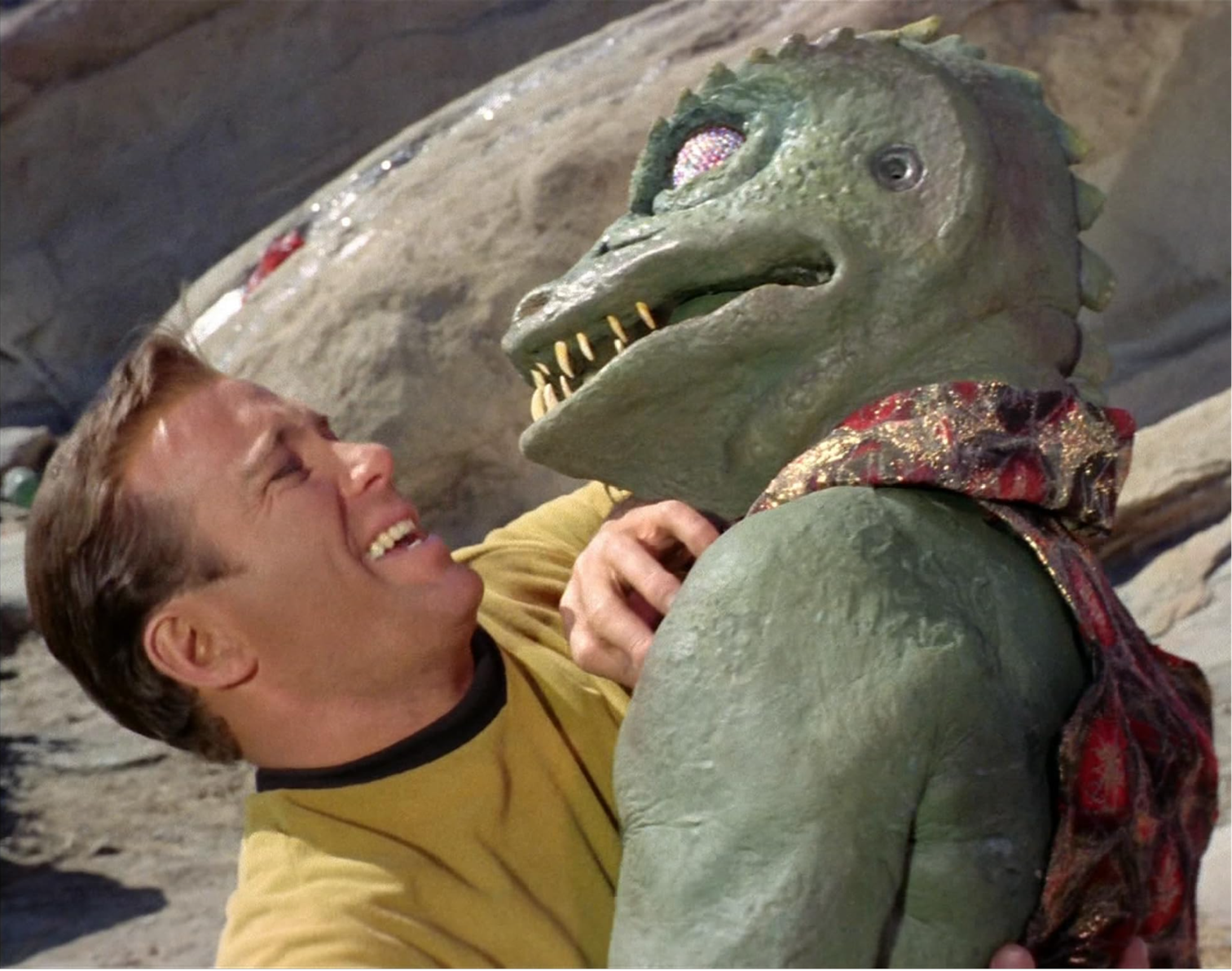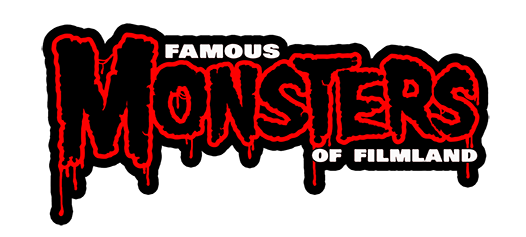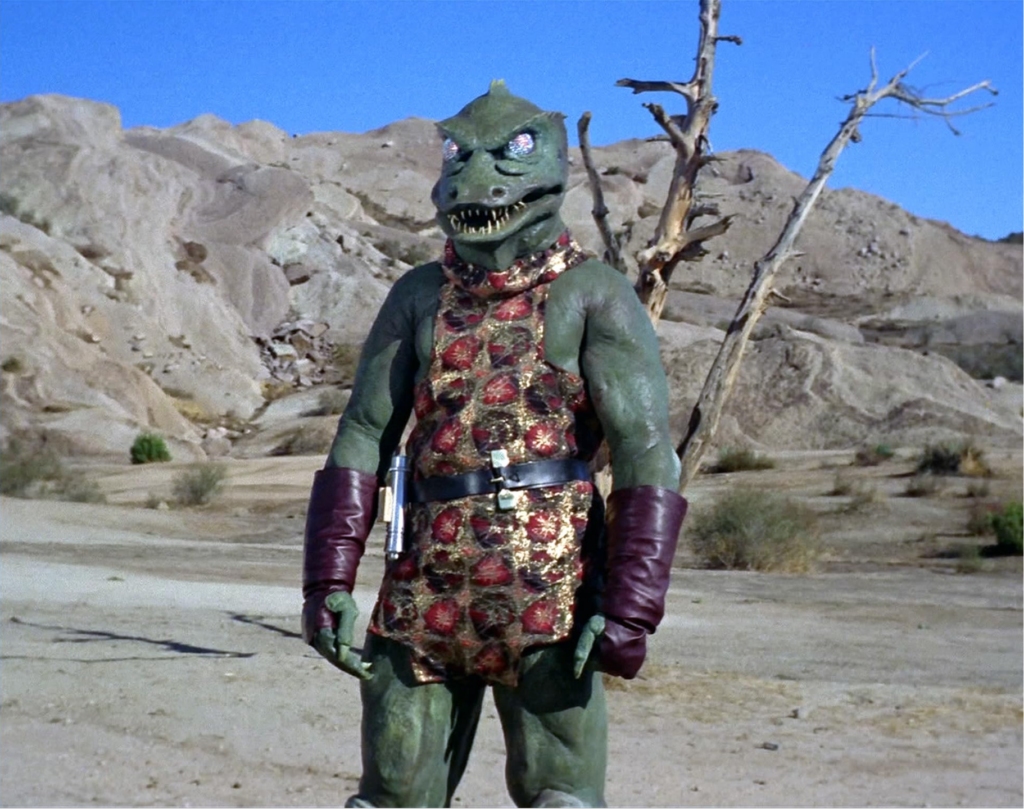Star Trek fans have always had a unique appreciation for the fantastical creatures the series introduced over its many episodes, but few are as iconic as Arena’s reptilian nemesis, the Gorn. Played by actor and stuntman Bobby Clark, the Gorn faced off against Captain Kirk in one of the most memorable television battles of the 1960s. From the theatrically lumbering movements to the now-beloved rubber-suit charm, the showdown on the desolate terrain of Vasquez Rocks in California forever etched the Gorn into the pop culture consciousness.
In this insightful interview conducted by Levi Tinker, a long-time cinematic moderator and pop culture enthusiast, we explore Bobby’s career, his time on Star Trek, and the impact of the legendary Gorn captain on sci-fi storytelling.
Revisiting Arena: The Gorn Episode That Changed TV
The January 19, 1967 episode of Star Trek, titled Arena, showcased Captain Kirk (William Shatner) begrudgingly battling the Gorn captain in a trial-by-combat orchestrated by a powerful alien race known as the Metrons. The Gorn’s coolly menacing design paired with the gritty, low-tech set transformed this episode into a touchstone for sci-fi fans.
The visually striking confrontation—though limited by the costume and effects of the era—was both entertaining and deeply philosophical. Themes of mercy, conflict resolution, and understanding resonated, offering more than the boulder-throwing spectacle viewers initially tuned in for. Bobby Clark’s portrayal of the Gorn, from its deliberate movements to its eerie, voiceless intimidation, made the character unforgettable.
Famous Monsters: What was it that inspired you to want to become an actor and a stunt performer?
Bobby Clark: Well, actually, my life, more or less, started when I joined the Navy. I was in the Navy for four solid years on board the Yorktown, an aircraft carrier. And when I got time to get out of the Navy, I said, I’m not going to wear cowboy boots anymore because I’m a cowboy. I’ve been a cowboy and a stuntman all my life, mostly practically a cowboy. And I say I’m going to throw my boots away. I’m going to get me some Levi’s. I’m going to get myself a suit, a nice shirt, and a sports coat, and I’m going to go to work.
I went to work for a 1957 Pontiac Agency in Santa Monica, dressed up, and went to work, and well, for two months, I never sold a car. In those days when you were a car salesman, you didn’t get an advance for anything. You sold a car, you got your percentage, and that’s what you did. Well, that didn’t last long. I went back to doing various odd jobs and stuff and being a cowboy. Then I went to the rodeos and started riding for a while. I went to places like up in Canada and rodeoed all over the place that I could, which was good. But some weekends, I’d sleep in a dirty horse trailer, and some weekends, I’d have an apartment or somewhere, a motel or whatever. Anyway, I did this and didn’t do badly, but I didn’t do well. I wasn’t living like I wanted to live.
So I asked a few other cowboys there what we were doing here. And they said, why don’t you join the picture business? And I say, yeah. I said, okay, well, that’s good. Well, I started out to do that, and then I found out that the extra union was what I could get into. You couldn’t get the job if you didn’t belong to the union. Now, how the hell does anybody work like that? But anyway, I went back and rodeoed some, and I met a rodeo clown. He used to be an extra in the picture business and took an honorable withdrawal from the SAG to do his rodeo work and stuff.
And I started talking to him, and he said, well, why don’t you become an extra? And I told him the story, and he says, well, geez, he says, I’m on what we call an honorable layoff of for work for a while. He says, and if you want to, you can go to work on my card. He says because I don’t think I’m going to get back to the picture business. So anyway, he told me the data and how to do this and that. So when I came back, I went over to SEG, which is Screen Extras Guild, and I went down there to reinstate for him being absent, but it was me. And they took my name and address and Social Security. And then I got my Screen Extras Guild card,
I was allowed to work for the studios. So then I started working extra, and an extra doesn’t talk over the film, and he just crosses the street or sits in a bar playing cards. And as time went on, I’d be watching stuff, and these guys would come in carrying little bags with ’em, and they’d go in and talk to the first assistant or somebody, and they’d go off to a trailer, and they’d come back wearing one of the actor’s clothes. And I’d watch this stuff. Well, these are stuntmen, and they’re going to double somebody that is working in this setup here. So, I watched this for a little over a year. I worked and pretended that I was going to be something anyway.
I worked with my horses, trained them, and started building my rep up. I worked extra, and I worked as a stuntman. I would go to work for, well, the first show I did was called Rawhide. Everybody’s probably familiar with Rawhide and Clint Eastwood and all those people. I was doing that under the extra card, then they’d come up and say, well, we’re going to have a little fight here at this bar. Well, I had an extra card. I couldn’t work extra and do acting parts. And an acting part was a SAG. So now I had to belong to SAG in order to push that a bit. So I worked at it and pushed it and pushed it. And finally, I was sitting there at the card tables, and I was saying a word or two, and then we got into a fight or something. Now, I’m starting to be a stuntman working here.
It just kept on going and kept on going. And pretty soon, I’m doubling the lead actors. I was on several shows. I did quite a while. I worked for Gun Smoke for about five or six years as a regular, but I was not a regular. I would work if they had Jim Arna riding his horse at a distance; they’d call me. I got my SAG card going. So it worked that way and kept on going here and there. And pretty soon, they’d say, well, Bobby says we can’t use you this week or so because you’re in the extras union too.
So now you have a choice. And you could not belong to the Stuntmen’s Association if you worked extra either. That association consisted of a majority of stunt guys working, and they worked with each other and worked out of things. And sometimes you’d get a job as a stunt coordinator, and you’d go there, and you’d read the script, and they’d figure out what kind of fight the director might be wanting, and you work with him. And it just kept working and working and working. Pretty soon, I guess I started getting a name, and I was getting calls and going to the casting directors. I even went to school to learn to be an actor.
Famous Monsters: You would end up appearing in four episodes of Star Trek in its first season?
Bobby Clark: Yes.
Famous Monsters: Most notably in the Gorn episode, Arena. Can you talk about being cast in that and what that process was like?
Bobby Clark: Alright, now, I was still a cowboy. I’m always a cowboy. I’m still a cowboy today, I think. And when I was working, I worked for different directors, and the director would say, well, let’s get Bobby Clark over here and do this. The director called me directly and said, ” Bobby, I got a job. He says it’ll be a good job and you’ll really like it.
He says, I want you to go to the wardrobe department, and I want you to check this wardrobe out for you to do this part. I say, well, that’s great. Well, what is it? He says I can’t tell you. You just go do it. He wouldn’t tell me. He knew. He could tell me anytime he wanted to, but he was fooling around with me. I went to the casting place, and I went to the wardrobe room. I walked in there, but there was nothing in the wardrobe room.
I was used to seeing clothes hanging there that I was supposed to try on and stuff like I didn’t see anything. So I called the wardrobe guy up and said, Hey, there’s something wrong. I’m in the wrong room. What room are you in? I told him, you’re in the right room. Your wardrobe’s in there. I say, well, no wardrobe hanging up. He says, no, no, it’s not hanging up. He says it’s over the rail there. Well, the rail is what they would put the hangers-on. It went like this and like that. And they’d put the actor’s hangers-on these things here. Well, this was just lobbed over it. And I looked at that, and I said, what is this? He says, well, it says here that you’re going to be a reptilian Gorn, and I was like, what is a reptilian Gorn? He says, well, you must get together with the director.
So, anyhow, it got to be where I got into the wardrobe and got all fixed up like that. And we go out to the desert area of Vasquez Rocks, which is in a place in California called Agua Dulce, which is also known as Sweetwater. And I get there, and we’re all there getting dressed and stuff. Now, I find out that Gorn is a reptilian creature who was sent to battle with Captain Kirk because the Federation had done some damage to a place called Cessna III. And they had it disliked for what the Gorn did there with it. And it was not a serious fight. It was that the Gorn were told they couldn’t do this when the Federation was trying to run it. And that’s when the difficulty came.
When Kirk and them went down to Cessna III to see what the problem was. Well, the Gorn had done some damage, just to make it more understood. See, the Gorn thought that Cessna III was an open satellite or an open world, and so did the federation, and it was open so the Gorn could use what they had to use and do what they had to do. And so did the federation. Well, the Federation started building another federation, so to speak there. And the Gorn didn’t care for that. So that’s when it started, and some of the Federation guys got hurt, and then they found out that it was the Gorn. So now, here goes to the Star Trek people. This was Jim. I mean, pardon me, Kirk. And they will take off after them, and so forth and so on. And it was going to be a dual; it was going to be a fight.

It was fixed up by the Metrons. And they said that the two of you are going to get on this planet, and you’re going to have a battle or dual or whatever you want to call it. And the winner who has killed, the other person will go, and the other person will be deceased. So that’s when we finally caught up with him, and boom, Captain Kirk was taken off his ship, and the Gorn was taken off his ship. They were both on this planet, and they had no weapons. They weren’t offered any weapons; nothing was offered. Just do what you have to do. If you got into a fistfight, kick, bite, do whatever. Whoever wins will continue to live, but the other must die. Well, we did this, and we did that, and I chased him, and he ran from me. He got hurt. I almost killed him. And then he got away from where he was. He could run. I the Gorn was a creature that just followed him and knew where he was. So we had a few talks a little while ago, and I called him one time. He was saying he was talking into his; what was that thing? They talked in?
Famous Monsters: Oh, the translator.
Bobby Clark: The translator. But he wasn’t translating. I think he was more or less like taping it. The Gorn heard him, and that was the Gorn’s first word, Captain Kirk. I have listened to every word you have said. This is the Gorn. Somehow or other, he talked about getting together with him, and he would be merciful and kill Kirk quickly. Well, it rolled on, and we walked all over the mountains in the hills. That was hell. I’ll tell you, in that costume, my feet were this long, and I’m walking in sagebrush and bushes and stuff like this. Well, that became a little rough.
Famous Monsters: What time of year was that episode filmed?
Bobby Clark: We filmed that in November. Pardon me, October, the end of October and November. Now, what I did on that show was only three days. Still, it seemed like a long time because there’s another little odd part of this is that when I got there, and before I got there, they called me and they said, Bobby, they say, now you have to eat an easy breakfast and don’t drink much coffee and don’t drink a lot of liquids and stuff like this. I didn’t do much of that anyway, but I did like water and stuff like that. Well, there was a reason for that: because of the uniform and the costume that I was wearing. I know that probably all of you have seen the divers who go scuba diving and stuff like that. Well, they have a suit they wear. It’s called a wet suit, and it’s like quarter-inch rubber That fits all over your body. And then that was the base of the uniform, the costume, and a makeup man who invented or who worked on costumes and stuff. His name was Chang, and he’s the one who put all the muscles on it, as well as the legs and stuff like that. Well, it was hard enough walking. It was, but with all this extra stuff, now I’m hauling more. And then the director also says, well, a reptilian creature in the morning doesn’t get up and scamper. They just wait until the sun comes up. And the warmer it gets, the more action they get. Well, that’s how I had to act in that situation.
Famous Monsters: What was it like acting in that scene, just imagining underneath all that weight of the suit? What was that like acting, especially when you’re having to choreograph the fight?
Bobby Clark: Well, that was all. I didn’t hit him. I couldn’t hit him, but I had to swing at him and couldn’t swing fast. He could, I mean, grab me and do this, and it was kind of, if he’s just a person watching it and you’re not involved with it, kind of hokey. Why is he? Why couldn’t he have done this? Why couldn’t he have done that? There were several scenes where I had a hold of Kirk, and we had a fight, and I picked him up, and I threw him away, and he flew. Now, why would he want to kill him? Why would you pick him up and throw him away? You start eating on him. I had the teeth I could eat on him. But anyway, like I said, it was a funny picture. It was funny.
Thank You, Bobby Clark!
This exclusive interview is a perfect blend of nostalgic storytelling and insightful reflection, made possible by moderator Levi Tinker’s expertise in curating cinematic conversations. Tremendously accomplished, Levi has spent over two decades as the voice of the TCL Chinese Theatre, hosting and moderating panels for fan conventions like Mad Monster Party and Mad Monster Expo. Levi’s passion for cinema and dedication to preserving its legacy has made him a prominent figure in the realm of film and fan culture.
Through Levi’s thoughtful questions, Bobby Clark takes us back to the golden era of Star Trek and provides a closer look at the history of one of sci-fi’s most beloved adversaries. This interview is a must-read for Trekkies and sci-fi enthusiasts alike, delivering a fresh perspective on the legacy of the Gorn and the people who brought it to life.
Keep an eye out for more insightful interviews and behind-the-scenes tidbits from Famous Monsters —where the legends of cinema live on, one monster at a time.


